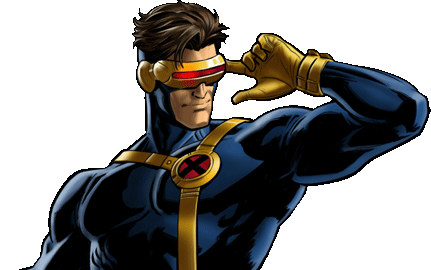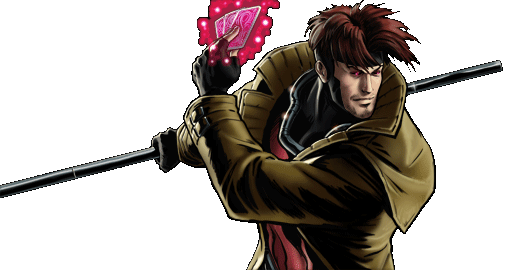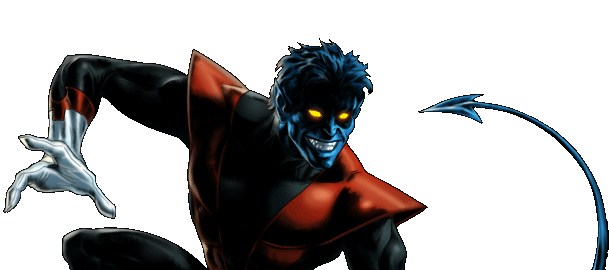There were a lot of “Easter Eggs,” as they are called, in Captain America: Civil War. I did not see them ALL, but I noticed/thought of a few to share with you, readers.
For one, is it not interesting how much the Accords anger Sam Wilson/Falcon? This may hearken back to the original comics. In the “mainstream” Marvel universe, the government had tried to control the Avengers back in the 1970s (I think). They reduced the team’s active roster to seven individuals whom they selected.
One of their choices was Falcon, who loved being an Avenger. Already a long time partner of Cap’s in the other’s solo series, Sam was happy to finally be a part of his friend’s exclusive superhero club. What he did not love about the arrangement, though, was why the government put him on the team.
The government wanted the Avengers to be a “more diverse” team, and so they added Sam to the active roster simply because he was black. No other reason. Not his fighting skills, which he had honed at Cap’s side; not his empathetic link with his trained falcon Redwing – heck, not even his wing pack was the reason they chose him to be on the team!
No. They chose him because of his race, so they could make a political point/gain a political advantage from his life. Yeah, that is super flattering, isn’t it?
Sam’s attitude with his teammates was genial, fun-loving, and practically sunny during this time. His relationship with their government liaison, Henry Peter Gyrich, was stormy and antagonistic. He hated being a token player, and he was not afraid to say so in front of the public. Sam wanted to be an Avenger on his own merit – which he was, in the eyes of his teammates. But the government put him on the team just to make a statement.
And Sam hated that.
So his dislike of the Accords in Civil War could be seen as a nod to this, in a way. Sam fears he and his friends will be locked up in a dungeon somewhere to rot if they sign the Accords, and his fears are well founded. History has shown that when one signs one’s freedom away it is almost impossible to get it back. The only way Sam and the rest of Team Cap regained their liberty in the movie was through outside help from Steve. And even now that they can breathe the free air again, the law considers them criminals. Outlaws with no Sherwood Forest to inhabit, Team Cap is going to have to do some fancy flying until the Infinity War films.
I think they can pull it off, though.
Now, about that fight Clint and Vision had when the archer went to pick up Wanda at the Compound. In the original comics, Hawkeye is (or maybe now was) the same age as the Maximoff twins. He became enamored of Wanda and was always flirting with her. The Scarlet Witch never returned the favor; she did not hate Clint, but she certainly seemed to find his advances annoying.
When Vision came along, Wanda fell head over heels in love with the android. After a while, the Vision developed his own personality and reciprocated the Scarlet Witch’s feelings. The two announced that they wanted to get married, which caused a huge ruckus. Quicksilver, for one, did not want his sister marrying a synthetic man.
And Clint was not happy about this sudden competition for Wanda’s affections, though by this point the battle was already lost. Neither Wanda nor Vision would be swayed, and they finally tied the knot. After they did this, Hawkeye left the Avengers because he could not stand to see the Scarlet Witch married to someone else.
Thankfully, this romantic triangle is NOT part of the film! Hallelujah!!!!! I am soooo happy!!!!
Okay, fan victory lap complete. Next!
Right, I said I was going to give you a bit of trivia about Wanda. When Tony goes to the Raft, the first inmate he sees is the Scarlet Witch, who is wearing a straight jacket and shivering in her prison cell. The manner of the Maximoff girl’s incarceration here is probably a nod to X-Men: Evolution. In that television series Wanda’s father – Magneto – had her locked up in an insane asylum because she could not control her anger, which made her probability manipulation powers run wild. While she was there she ended up wearing – guess what? – a straight jacket. She did not enjoy it in that series, either.
The inhibitor collar we see Wanda wearing in her last scene during the movie was not part of her incarceration in Evolution. However, such collars are a fixture of X-Men lore. These devices are the only things the comic book authorities have which are capable of suppressing mutant powers. Heh, I guess Disney/Marvel got something mutant-related into their films under Fox’s nose after all!
As an interesting side note, while I do not know how likely it is, if the film writers want to keep pulling plot points and tidbits from the comics, we may see Wanda in a mid or end credits scene in Doctor Strange this November. In the original stories, Wanda’s probability manipulating powers were so hard for her to control that she went looking for help to get them totally under her command.
Her choice of tutor, however, was rather… unconventional. Agatha Harkness, a bona fide witch/sorceress from Salem, Massachusetts, taught Wanda enough magic for the younger woman to make her “hex” power more stable and reliable. In doing this, Harkness realized that Wanda had great potential in the realm of magic. This led to Strange calling on the Scarlet Witch from time to time for help fighting his occult enemies. Eventually, Wanda tapped into this magical potential, becoming the “mainstream” Marvel universe’s most powerful sorceress.
This led to her going loopy at least two, perhaps three, times in the “mainstream” comics. She destroyed the Avengers (and Hawkeye) the first time. The second time, she eradicated most of the mutant powers on the planet (along with Hawkeye, temporarily). The third time, everything else in the Marvel “mainstream” universe was also flying haywire, so Wanda’s mental instability in that event was almost negligible.
Wanda’s powers in the films have so far given no real sign of being out of her control. Still, the writers could pull anything out of their hats between Civil War and the Infinity War films. This is speculation, of course, but it bears mentioning.
Now, about the Raft itself. In the comics, the Raft is a high security super villain prison. Not that you could tell, since it has been subject to prison breaks in the past. Designed to be something of an East Coast equivalent to Alcatraz, the Raft is farther out in the Atlantic in Civil War than it is in the comics. In the books, the Raft is on an island. In the film, it is an island! (It is also, apparently, kept under water until the people running it are expecting visitors.)
During the comic book Civil War, Tony and the government enforcers for Superhero Registration working with him incarcerated captured anti-Registration heroes in an inter-dimensional super villain prison known as 42. 42 was really not a safe environment for the captured heroes. Of course, since Marvel was determined to make Tony a villain (they had succeeded last I looked), this hardly mattered to him or his bosses. The heroes under Cap’s leadership who were caught were bundled off to 42 without a trial, public or otherwise, and left to rot with the criminals they had spent their lives bringing to justice.
The film, of course, could not handle the intricacies of such a prison, so the Raft was substituted in its place. That is all right by me. I do not think I could have handled 42 being jammed into the movie! The Raft was a perfect substitute – especially since its only inhabitants were the guards and the imprisoned members of Team Cap. A picture is worth a thousand words, and the Raft said a million in fewer than ten minutes.
Now for Baron Zemo. Yes, in the movie, he is not a baron. (Whoop-dee-doo, so what?) In the comics, Baron Helmut Zemo is the last of a line of German nobles who have historically had an unhealthy habit of becoming evil. It practically seems to be bred into them, a trait passed from father to son as some sort of weird genetic inheritance. I do not know if there was ever a “good” Zemo in the whole family tree.
Baron Heinrich Zemo, in the comics, was one of Cap’s World War II enemies. A Nazi scientist, Heinrich Zemo had just managed to make a super glue so powerful nothing could break the adhesive. Cap showed up at about that moment and, during the ensuing battle, broke the container for the glue. The liquid spilled onto Heinrich Zemo’s head, which was covered by a hereditary hood/mask.
The mask was then permanently stuck to Heinrich’s face by his own super glue. It made eating and a few other things a bit of a problem. After he was awakened by the Avengers, Cap eventually faced Heinrich for the last time in Brazil. Light from Steve’s shield, reflected back in Zemo’s face, threw the Baron’s shot way off course. The misfired bolt started a rockslide, which killed Heinrich Zemo. Cap saw to the Nazi’s proper burial – which is more than Heinrich Zemo would have done for him – and went home.
A few years later, Zemo suddenly showed up again. Except this Zemo is not Heinrich; it is instead his son, Helmut. The guy has hung around ever since and been nothing but a plague. He can usually be seen leading his own team of anti-Avengers, which he calls the Masters of Evil.
This is one of the things from the “mainstream” comics to make it into the Civil War film. Helmut Zemo having a wife and son is new, but his father – that is old hat. In the comics, Helmut Zemo’s entire vendetta with Cap is based on the fact that he believes Steve killed his father in Brazil. The younger Baron is unwilling to distinguish between his father’s mistake and Cap’s lucky timing. Cap made his father miss, and it does not matter to Helmut that his father’s death was, basically, inadvertent. It happened, Cap was there, and so it is his fault.
Gee, that resembles Zemo’s grudge with the Avengers in the film, now doesn’t it?
In Civil War, Zemo holds all of the Avengers responsible for the deaths of his family, including the demise of his father. Though the inclusion of the senior Zemo is a seemingly throwaway bit of story, it is actually a nod by the writers to the original storytellers. Nifty little trick, I must say.

This is going to surprise some people, but the next thing to point out is that amazing internecine battle at the German airport. I do not know of any Avengers battles taking place in airports in the “mainstream” comics. They probably happened; I just do not know about them. But there is an X-Men battle from the original comics which took place in an airport that I know about. And unfortunately, this airport was not empty when the fighting started!
While seeing the Professor off on a well-earned vacation one day, the X-Men were confronted by a villain calling himself Eric the Red. He had taken control of Alex Summers/Havoc, the younger brother of Scott Summers/Cyclops. (Yes, I know this order has been reversed in the new X-Men films. Another reason I hate them.) Havoc knew he was being dominated, but he could not fight off the villain’s influence. Still, he was able to talk to his older brother and the other X-Men, proving that he was aware of what Eric the Red was doing to him.
Lorna Dane/Polaris, Havoc’s mind-controlled girlfriend … not so much. She was completely under the Red’s spell, and the fight spiraled out of control when she knocked Jean Grey a good one.
Storm retaliated in kind out of fury, since she and Jean were tight friends. This counterattack by Ororo in turn enraged Havoc. Mind control or no mind control, you did not want to go after his girlfriend. Not if you wanted to keep breathing!
It is a long shot to see a parallel between these two battles, I admit. But heck, the Marvel universe is full of long shots! They both took place in an airport. If nothing else, that is an odd coincidence!
Then there is Tony recruiting Spider-Man to Team Iron. When Spidey at last realizes he was used as an “ace in the hole” by Tony Stark for Civil War, there are going to be Whigs on the green. But for now, the important part is his new suit.
Uh-huh, I just said the important part of that scene was Peter Parker being given a new suit by Tony Stark. During the “mainstream” comic book civil war event, Spidey was convinced to join the pro-Registration side of the argument by Iron Man. He revealed his identity to the world, and Tony gave him an electromechanical suit which could sprout three extra legs and shoot repulsors from the hands, among other useful tricks.
In the film, this idea is presented in a slightly different manner. Parker cobbled his original suit out of old fabric in the movie, adding a set of secondhand goggles so he could better process information. The whole effect was far from intimidating. It was not even very appealing.
Tony states he needs an upgrade, which we get to see at the German airport. This suit, while it resembles the original outfit for Spider-Man in the comics, definitely has some Stark flair added to it. The fabric is high grade, almost like a suit of nanite skin, and there are camera lenses in his mask, enabling Parker to focus in on an object, person, or some such. (The lenses can also widen to show his shock when Ant-Man becomes Giant Man!) His webshooters are also more tricked-out than they were previously.
Although the results are different, the gift is essentially the same. Tony thought Spidey’s old suit in the comics needed a little more Iron in order to better protect him. In the movie, however, Parker really was in dire need of a new, better suit. Tony messed up a lot of things in Civil War, but we have to admit he did a very good thing for Spider-Man here!
Finally, there is King T’Challa. Many will already have put this together, but here it is again. In the “mainstream” comics, the mantle of Black Panther is passed down from one warrior in the royal family to another. King T’Chaka is not mentioned as ever having been a warrior or the previous wearer of the Black Panther mantle. More’s the pity.
Anyway, in the comics, T’Challa took the responsibility of being the Black Panther after his father was defeated and killed by one Ulysses Klaw. T’Challa, a child of maybe thirteen at the time, managed to scare Klaw off – destroying his right arm in the process – after the mercenary had betrayed and killed his father. T’Challa’s uncle ruled Wakanda as regent until the prince was old enough to undergo the trials he needed to pass to take up the mantle of the Black Panther. Once that was done, T’Challa suited up, kicked Klaw’s backside, threw him in prison, and became king of Wakanda. Following on that success, he joined the Avengers.
This is similar to the story we see in the film. T’Challa only dons the suit of the Black Panther after his father’s death, so that he may avenge him. In the film, Bucky is the one who takes the rap for killing King T’Chaka, which brings T’Challa into the fight on the side of Team Iron.
A last interesting note is that, in the “mainstream” comics, Panther at first declared neutrality in the comic book civil war event. But he and his wife, Ororo Munroe/Storm, eventually sided with Cap when it became clear Tony had completely gone off the deep end and was going to run everything into the ground, probably killing someone along the way. Unfortunately, the Marvel writers still managed to have him do that. Sorry, Panther.
Well, readers, I have delivered on my promise to discuss the hint I mentioned about Wanda’s incarceration – and then some! So as of now, I will sign off and give you all a chance to have fun elsewhere.
Avengers Assemble!
The Mithril Guardian













_(Earth-12131)_001.png)







